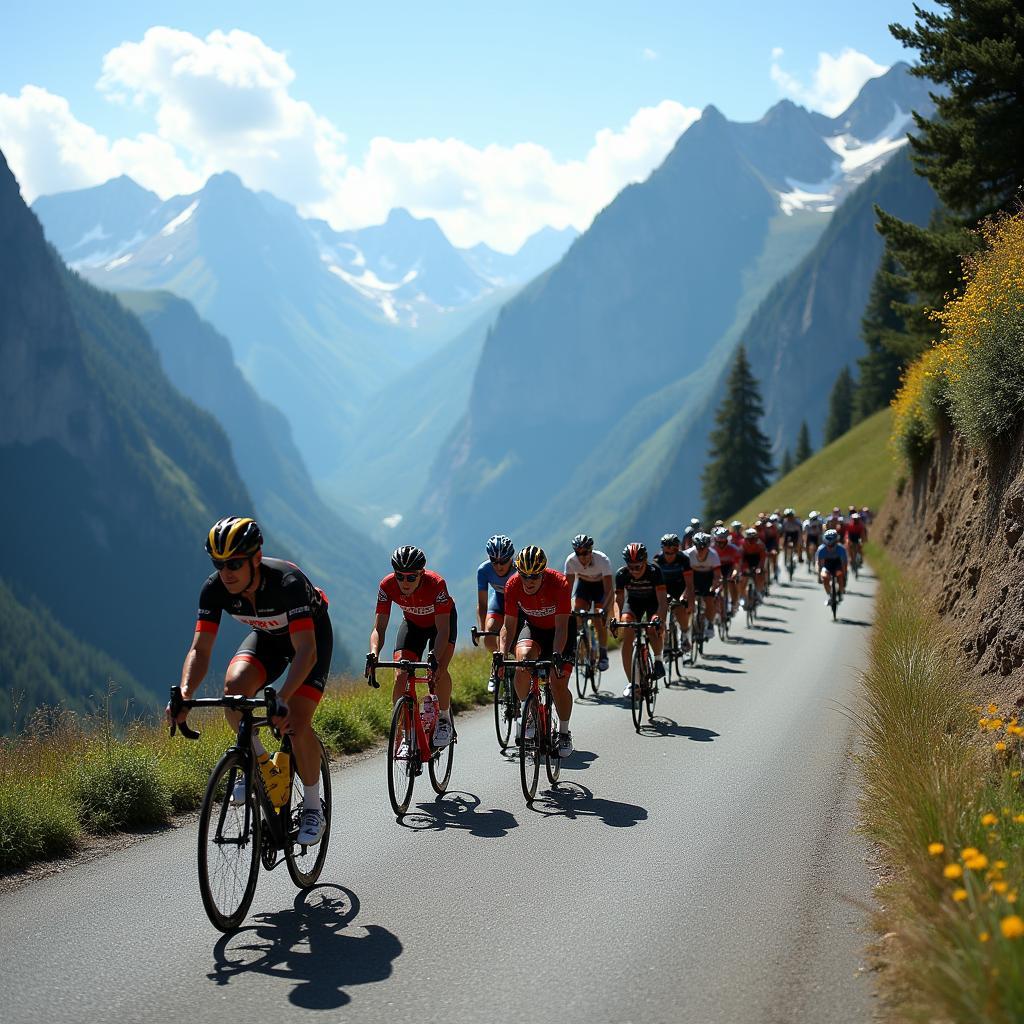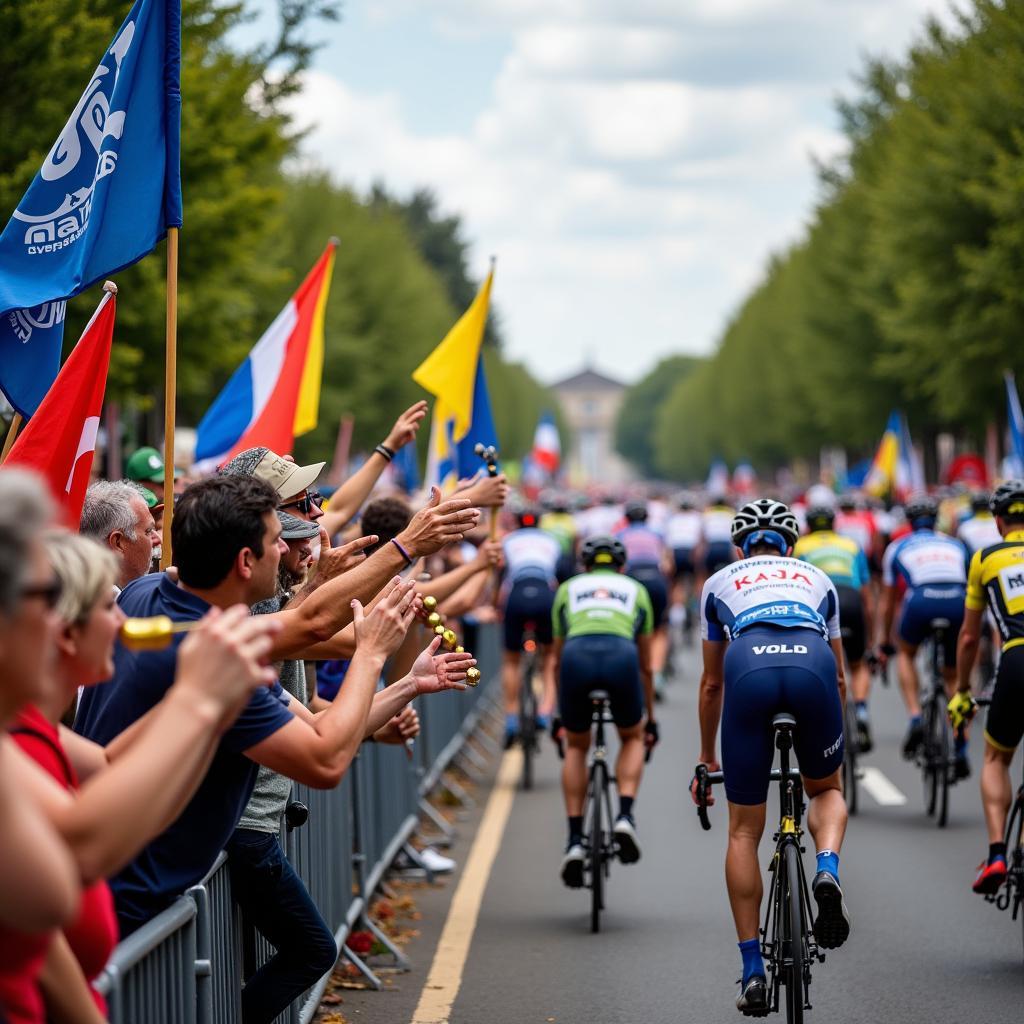The Tour De France Route is more than just a path for cyclists; it’s a captivating journey through the diverse landscapes of France. From towering mountains to sun-kissed vineyards, each stage offers a unique glimpse into the heart of French culture and natural beauty. This article explores the magic of the Tour de France route, offering insights for both avid cycling enthusiasts and those simply curious about this iconic race.
Unveiling the Tour de France Route’s Secrets
The Tour de France, often referred to as “Le Tour,” follows a meticulously planned route that varies from year to year, keeping the excitement fresh and unpredictable. While the specific locations change, the core essence remains: a challenging yet rewarding experience that tests the limits of human endurance and showcases the breathtaking beauty of France. The route typically spans around 3,500 kilometers, covering flat stages perfect for sprinters, challenging mountain climbs for the climbers, and individual time trials that demand both physical and mental strength. Understanding the intricacies of the tour de france stage 1 route can help appreciate the immense effort and strategic planning involved.
Exploring the Different Stages
The Tour de France route is divided into stages, each with its own unique characteristics. Flat stages provide opportunities for sprinters to battle it out for stage victories, while mountain stages offer dramatic climbs and descents that test the resilience of the peloton. Individual time trials demand precision and focus, allowing riders to showcase their individual prowess. These diverse stages ensure that the race remains dynamic and unpredictable, keeping spectators and participants on the edge of their seats. Knowing what is the tour de france is crucial for understanding the complexities and challenges of each stage.
 Cyclists Ascending a Mountain Pass During the Tour de France
Cyclists Ascending a Mountain Pass During the Tour de France
The Significance of the Route’s Diversity
The varied landscapes traversed by the Tour de France route contribute to its legendary status. From the rolling hills of the countryside to the dramatic peaks of the Alps and Pyrenees, the race offers a unique spectacle. The route also weaves through charming villages and historic towns, allowing spectators and riders to experience the rich tapestry of French culture. This blend of athleticism and cultural immersion is what truly sets the Tour de France apart.
Planning Your Own Tour de France Experience
Whether you dream of cycling a portion of the route yourself or simply want to witness the spectacle firsthand, planning is essential. Bike tours loire valley france offer a fantastic opportunity to explore some of the beautiful regions often featured in the race. Researching the specific route for the year you plan to visit, booking accommodations in advance, and securing tickets to key stages are crucial steps.
Experiencing the Race as a Spectator
Watching the Tour de France live is an unforgettable experience. The energy of the crowds, the speed of the cyclists, and the dramatic scenery create an electric atmosphere. Finding a good vantage point along the route, packing appropriate supplies, and being prepared for all types of weather are essential for a comfortable and enjoyable viewing experience.
 Spectators Cheering on Cyclists During the Tour de France
Spectators Cheering on Cyclists During the Tour de France
Training for Your Own Cycling Adventure
For those inspired to cycle the Tour de France route themselves, dedicated training is a must. Tour de france trainer can help you create a personalized training plan. Building endurance, developing hill-climbing skills, and understanding proper nutrition are key components of preparing for this challenging endeavor.
 Cyclist Training for the Tour de France on a Scenic Road
Cyclist Training for the Tour de France on a Scenic Road
Conclusion
The Tour de France route is a testament to the beauty and diversity of France, offering a unique blend of athleticism, cultural immersion, and breathtaking landscapes. Whether you are a seasoned cyclist, a passionate spectator, or simply curious about this iconic race, exploring the Tour de France route offers an unforgettable journey. Start planning your own Tour de France adventure today!
FAQ
- How long is the Tour de France route? Approximately 3,500 kilometers.
- When does the Tour de France typically take place? July.
- What are the different types of stages in the Tour de France? Flat, mountain, and individual time trials.
- How can I watch the Tour de France live? By securing tickets to specific stages and finding a good vantage point along the route.
- How can I train to cycle the Tour de France route? By following a dedicated training plan that focuses on endurance, hill climbing, and nutrition.
- Where can I find more information about specific routes? The official Tour de France website.
- Are there guided tours available for cycling portions of the route? Yes, numerous tour operators offer guided cycling trips.
Need support? Contact us at Phone: 0373298888, Email: [email protected], or visit our office at 86 Cau Giay, Hanoi. Our customer service team is available 24/7. For more information, explore our articles on what is the tour de france Informational.